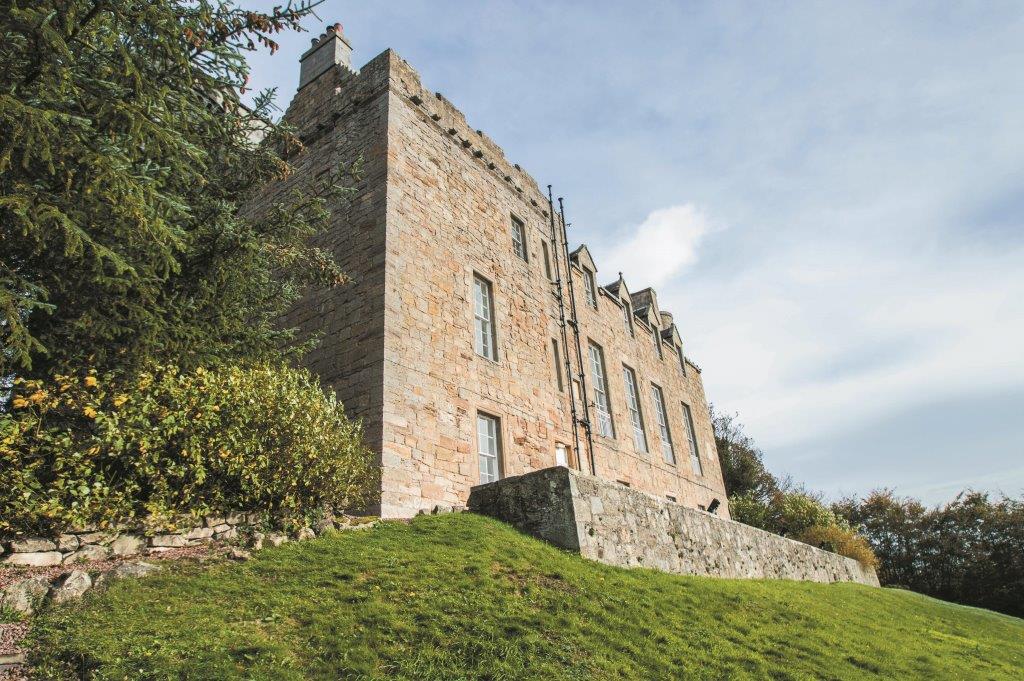Airth Castle

Airth Castle Details
Airth Castle, occupied C15 tower of Bruces on site of earlier castle, extended C16-19 and now run as a hotel
- Closest To: Airth, Kincardine, Stenhousemuir
- Access: Free Public Access
- Grid Reference: NS900868
Airth Castle sits at the southern edge of the Hill of Airth, which overlooks the marshy ground now drained by the Sauchinford Burn, and the River Forth. At its core are the much altered remains of a tower of the Bruce family, which have repeatedly been extended until totally masked by a new frontage of the early 19th century.
The tower is almost certainly that erected for Robert Bruce of Airth after his previous “place” had been burned out during the civil war of 1488 resulting in the death of King James III. This roughly square tower can be seen from the south at the left (western) end of the buildings that stand today. A wing was added in the 16th century to the east, and this extension was further enlarged by the addition of another to the north in 1581. Between the two wings a narrow square tower was erected containing stairs. This L-plan mansion may have been extended to form a U-plan, with a third wing extending north from the old tower, but if so, it had vanished by 1762. Between 1807 and 1809 a new frontage was erected and the gap between the wings filled in, which gave the building a triangular footprint. Ruins to the north-east of the castle are those of the old church.
The history of Airth is complex, as the lands were divided into four parts in the 13th century – and in fact there are castles serving all four portions. However Airth itself was retained by a family carrying the name de Airth, and passed with the marriage of Agnes Airth to Sir Edward Bruce of Stenhouse in about 1304. Their grandson Sir Alexander died in 1488 and was succeeded by his grandson Sir Robert as the heir, John Bruce of Stenhouse, had predeceased Sir Alexander in 1483. It was this Robert for whom the tower was rebuilt post Sauchieburn. He was killed at Flodden in 1513, and followed by his son, another Robert, and Robert by his grandson, another Alexander, who died in about 1600. It was therefore in the time of his son or grandson that the two extensions were added to the old tower. Following their involvement in the Jacobite cause, the Bruces of Airth were forfeited, and the estate sold to James Graham, the 1st Duke of Montrose in 1717. The Grahams owned Airth Castle until 1971, when it was converted into a hotel. According to their website, “Airth Castle Hotel & Spa is currently undergoing a massive transformation with a £4m investment which will see the hotel totally re-styled.”
Become a supporter of my work to access a more detailed history